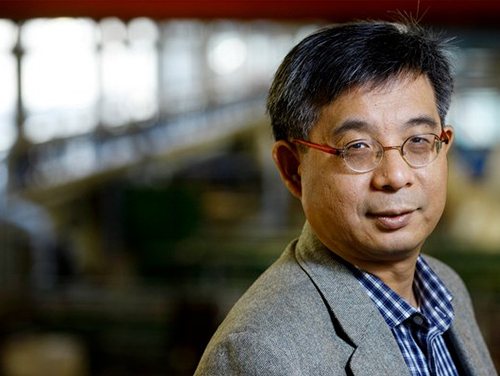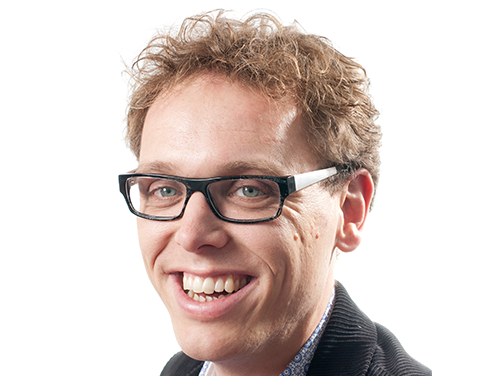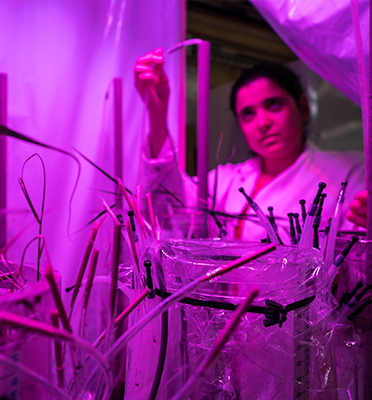Last September, researcher Bram van Prooijen and Professor Zheng Bing Wang, who both work for the Hydraulic Engineering department were given the green light to start the SEAWAD research project. The latter hopes to answer the important question of how the coastline along the Wadden Islands can be protected in the future utilising some kind of sand engine as is done along the coast of the province of Zuid-Holland. For four years, researchers at three universities will immerse themselves in the issue.
The sand engine, the artificially created expanse of sand off the coast of Zuid-Holland was developed to protect the Dutch coastline from erosion by making use of naturally occurring maritime currents. Before the construction of the sand engine, some 12 million cubic metres of sand suppletions were dumped along the Dutch coast annually, explains Zheng Bing Wang, Professor of Morphodynamics of lagoons and estuaries. "The idea behind the sand engine is conversely to create a single, enormous 20 million cubic metre sand suppletion in one go, off the coast. Every year, a million cubic metres of sand will spread out along the Dutch coast from the sand engine making fewer or no sand suppletions necessary over the coming years. After 20 years, the sands engine should have disappeared entirely; the whole idea is for it to wash away! The sand engine’s main advantage is that you get nature to do the work of spreading the sand around for you."
Another advantage of creating such a mega-suppletion is that you only disturb nature once and in a single location and that no disturbances occur in the years that follow. Although the sand engine’s results have not been officially announced yet we are already contemplating whether the same principle might be used in the Wadden Islands to protect them from constant sea erosion and rising sea levels.
"That idea constitutes the basis for the SEAWAD research project," explains assistant professor Bram van Prooijen. "If you let nature do its thing in the Wadden area, the coast off the islands would decrease and the sand end up in the Wadden Sea. This is why regular sand suppletions are applied to the Wadden Islands. The question is whether you would achieve the same results with a massive sand suppletion on the seaward side of the islands."
Dynamic
In Van Prooijen’s opinion the research is so interesting because the Wadden area is a much more dynamic area than the Dutch coastline. "There a lot more processes at play in the distribution of sediment. Wave action is the most important factor for the sand engine. In the Wadden Sea the tides also play a role. It is precisely this combination that can lead to different effects displacing sediment. It is, for example, very important to know how much sand from a sand suppletion ultimately ends up in the Wadden sea."
Simultaneously, the topic is a somewhat sensitive one, remarks Wang. "If we nevertheless have to implement such suppletions then it would be better to distribute the sand using the naturally present dynamics. On the other hand, the use of a large sand suppletion is a sensitive issue in the Wadden Sea, a UNESCO world heritage site."
Closely involved
This why over the coming four years, the consequences of a large-scale sand suppletion in the Wadden Sea will be mapped out for a surprisingly large number of subjects. One of the great aspects of the SEAWAD study is that three universities will be closely involved in the project, say Van Prooijen and Wang. For instance, the research funds were made available in part by The Directorate General of Public Works and Water Management [Rijkswaterstaat], Deltares, engineering firms and dredging companies. Van Prooijen: "Every stakeholder in the Netherlands knows the others well. That is why it was decided to not compete, but to jointly conduct this research and share the knowledge."
Thanks to the research funds, four PhDs at the various universities will start work next year. As project leader, Wang will oversee things while Van Prooijen will take on the day-to-day coordination of the research groups. "Two PhDs will get busy in Delft. One researcher will study the interaction processes between waves and sediment on a small scale and the other will primarily examine the large-scale sediment transport patterns," Van Prooijen tells us. "Furthermore, in Utrecht a researcher will study the moving of channels between the islands and in Twente research will be conducted into the ecological effects of a mega-suppletion at a regional scale."
Wave buoys
In Delft, led by Professor Ad Reniers, for instance, a great deal of attention will be paid to the effect waves have on the displacement of sediment. To this end, researchers wish to use special wave buoys that float along with the tidal currents. Van Prooijen: "This immediately makes them current measuring instruments. In the meantime, they also measure wave heights and collect more precise measurement data on the asymmetry of the various waves. Calculations currently employ an average for this, but we wish to be able to create simulations with much higher levels of accuracy. This will give us a better grasp of the processes that play a role at this small scale and allows us to reduce the uncertainties in our model."
The researchers will also literally get their hands dirty with the field studies aimed at measuring the grain size and composition of the sediment present at various locations. "Then, with the aid of computer modelling we will be able to calculate what would happen if a mega-suppletion was created at a specific location off the Wadden Islands," continues Van Prooijen. "Where will that sand end up in the end, and do you get different results if you use a slightly coarser grain? These are typically questions that Rijkswaterstaat, that is responsible for creating sand suppletions is especially interested in."
Computer modelling
One of the computer models that will be used for the study is Delft3D, freely available software developed by Deltares. Van Prooijen: "At the moment it’s the best programme for modelling currents and sediment displacement in various coastal areas. The software is used around the globe. Because Deltares has made the software available to everyone we can easily incorporate our simulations. The Wadden Sea is such a complex area that if we can make better models with our new data and simulations, Delft3D will be employed even better at many other locations that have similar problems."
Wang furthermore underlines the importance that SEAWAD will have in the future on the way coastal erosion is tackled in the Wadden Sea. "The knowledge we will acquire thanks to SEAWAD, will ultimately determine whether Rijkswaterstaat will start a pilot for the creation of a mega-suppletion near the Wadden Islands. We probably won’t get a Nobel Prize for our technological innovations, but – for the future of the area that is also subject to rising sea levels – te results will be crucial."
Published: March 2016





